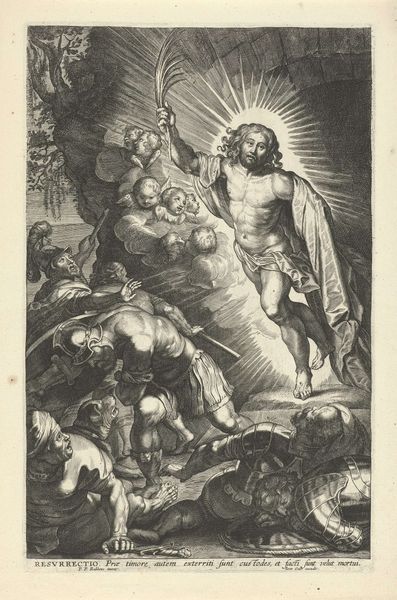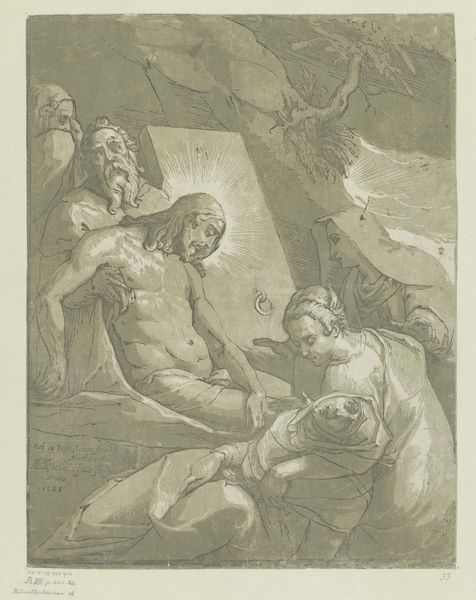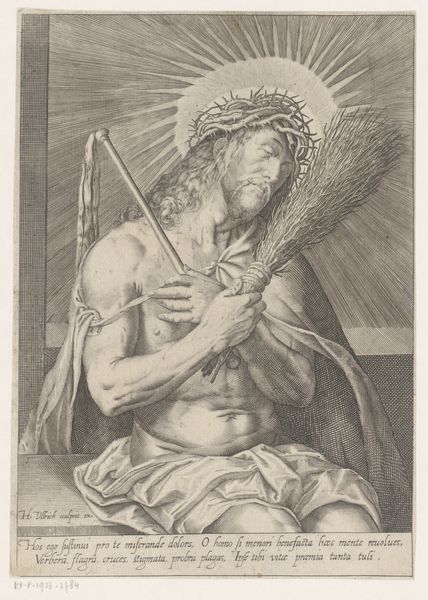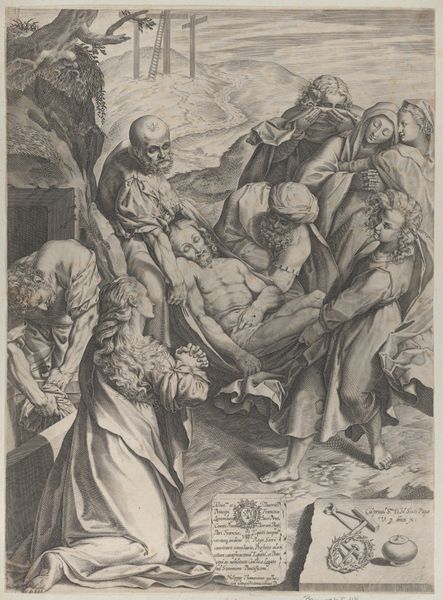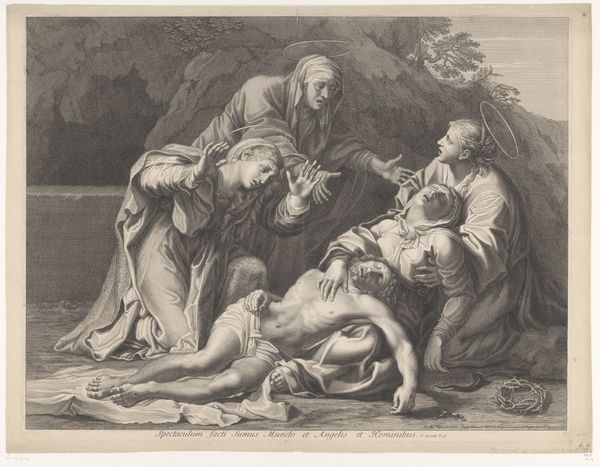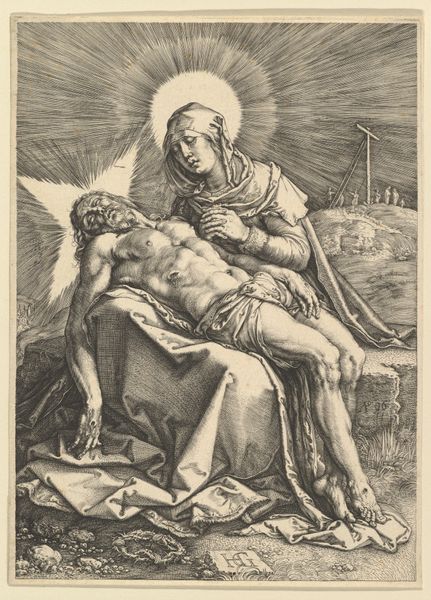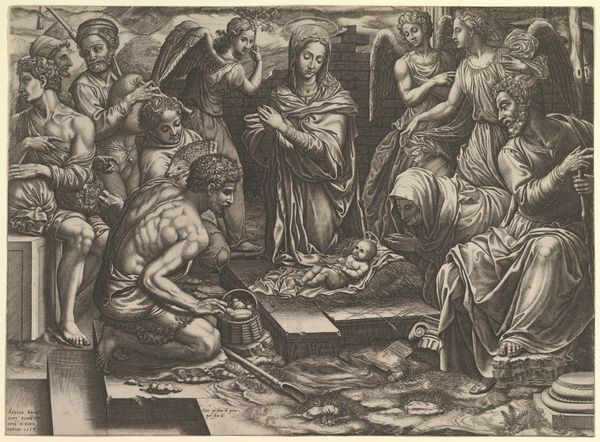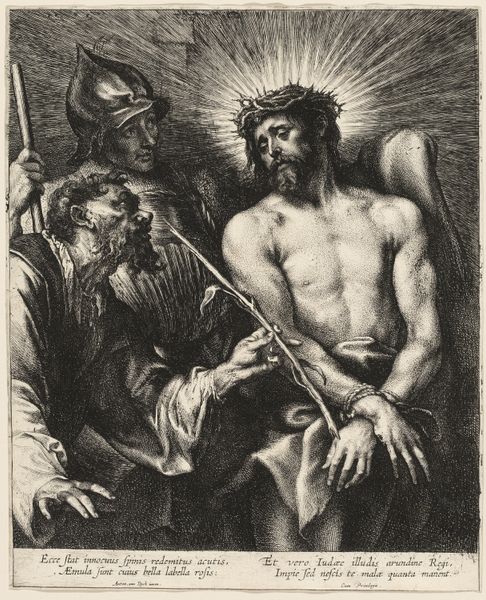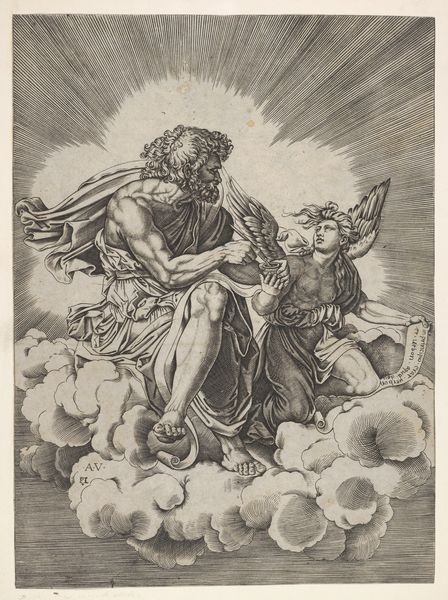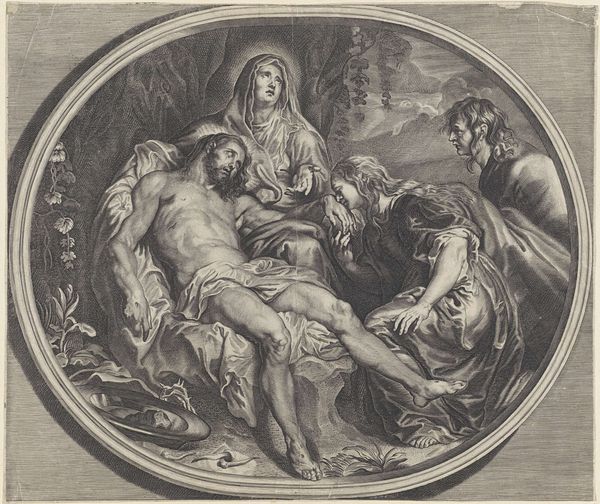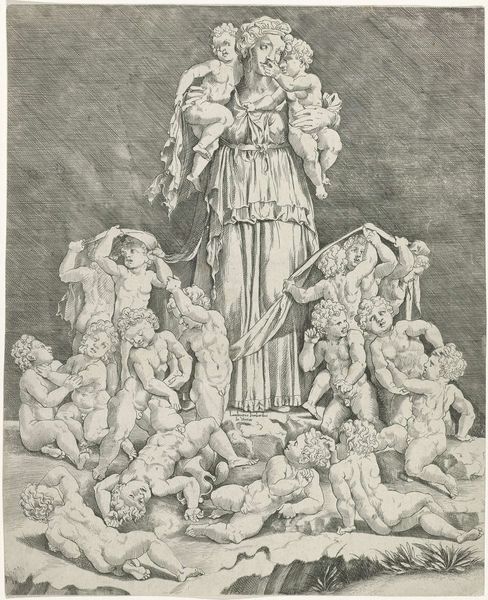
print, engraving
#
allegory
# print
#
mannerism
#
figuration
#
11_renaissance
#
history-painting
#
engraving
Dimensions: height 205 mm, width 270 mm
Copyright: Rijks Museum: Open Domain
Editor: Here we have Giulio Sanuto's "Pieta," an engraving from the mid-16th century, currently at the Rijksmuseum. It’s striking how theatrical the scene feels, even within the relatively limited medium of a print. What's your interpretation of this piece, especially considering its historical context? Curator: Considering this "Pieta" emerged during the Mannerist period, we see a distinct departure from Renaissance naturalism. This engraving invites us to reflect on how artists used religious narratives to explore power, gender, and emotional expression in times of great religious and political upheaval. Note how Christ’s body is presented, almost as an object of display rather than simply a figure of suffering. What does that suggest to you? Editor: It feels almost like… propaganda? Like it's using this powerful imagery to make a statement about strength, maybe divine strength, even in death. Curator: Exactly! Consider the political landscape. The Counter-Reformation was in full swing, and images like these played a role in reaffirming Catholic doctrine and demonstrating the Church's power. How do you think the presentation of Mary and the angels contributes to this narrative? Editor: They seem to be actively supporting and presenting Christ, which feels less like mourning and more like… a strategic visual argument? Almost like they're displaying the evidence, showcasing His sacrifice as the ultimate act of love and strength? Curator: Precisely! The dramatic composition and the idealized figures amplify the intended message, solidifying faith and reinforcing institutional power through art. This piece is far from just a religious scene. It’s a powerful commentary on the political and religious dynamics of its time. What do you think we can learn from viewing this Pieta with the lens of contemporary theory? Editor: That's a lot to consider, viewing this through both art history and political messaging. Curator: Absolutely! Recognizing that art and power are frequently interwoven helps us understand the depth and complexities behind works like these, across all periods.
Comments
No comments
Be the first to comment and join the conversation on the ultimate creative platform.
